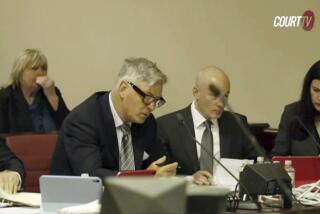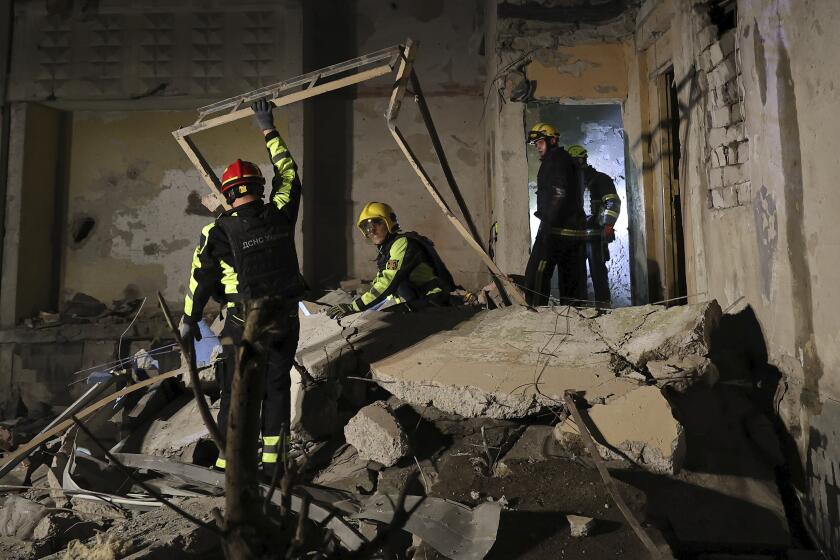Jury in George Zimmerman trial faces tough task
SANFORD, Fla. — The courtroom has echoed with recordings of chilling screams for help and neighbors’ fearful calls to police. But as jurors decide George Zimmerman’s fate in a murder case that drew national attention to issues of race and gun laws, they have little physical evidence or eyewitness testimony to guide their deliberations.
The continuing mystery of what happened the night Trayvon Martin died was reinforced this week when both sides used a foam dummy to illustrate their disparate views of the events of Feb. 26, 2012, when Zimmerman fatally shot the 17-year-old.
Prosecutor John Guy brought the life-sized dummy into court to undermine Zimmerman’s account of Martin holding him down, forcing him to shoot in self-defense. Defense attorney Mark O’Mara responded by using the dummy for his own demonstration, laying it on the floor, straddling it, and pounding its head into the ground, as Zimmerman, 29, says Martin did to him.
GRAPHIC: Who’s who in the Trayvon Martin case
The bizarre bit of drama underscored the vastly different portrayals of Zimmerman and Martin, in the courtroom and across the country.
To his supporters, Zimmerman was an earnest neighborhood watch volunteer tracking a stranger in his gated community — a stranger who Zimmerman says jumped him. To his critics, Zimmerman was a vigilante who assumed that Martin, with his dark skin and hoodie walking with a bag of candy and soft drink, must be trouble. Martin’s fate seemed to reinforce the feeling among African American parents that their teenagers face unwelcome scrutiny.
“It became an emblem because, whatever else, Trayvon Martin was literally just a kid in the wrong place, and then it had the racial overtones,” said Jules Epstein, a former criminal defense attorney in Philadelphia who teaches law at Widener University School of Law in Wilmington, Del. Zimmerman, whose father is white and whose mother is Latina, is light-skinned and was initially described as white.
PHOTOS: The controversial case in pictures
Soon after the killing, President Obama put words to other parents’ fears. “If I had a son, he’d look like Trayvon,” Obama said last year amid nationwide protests over Sanford police officers’ failure to immediately arrest Zimmerman.
Zimmerman’s arrest, 44 days after the shooting, followed protests and rallies organized by civil rights leaders that prompted Florida’s governor to appoint a special prosecutor to take over the case.
Now, Zimmerman faces life in prison if convicted of second-degree murder. Jurors may also consider the lesser charge of manslaughter when they begin deliberations, which are expected to start Friday after both sides finish closing arguments.
In the neighborhood of Goldsboro, an independent black-run city before it was annexed by Sanford in the early 20th century, Francis Oliver has watched the trial on television since it began June 10.
“This case to me stands for all those other cases of young unarmed black men killed without anyone being charged,” said Oliver, who runs the Goldsboro welcome center. A memorial to Martin, and to several other Sanford youths who have died violently, sits on the grass outside the building.
“The parents of this boy said no to that,” Oliver said of Martin’s parents, Sybrina Fulton and Tracy Martin, who appeared in court each day. “The community and the parents said, ‘Well, maybe this can be the signature case — this can be the case where we put justice on trial.’”
The case also grabbed the public’s attention because of Florida’s “stand your ground” law, which police cited in their decision not to arrest Zimmerman. The law allows the use of deadly force and does not require an armed person to retreat if he or she feels in danger of great bodily harm or death.
Even though Zimmerman’s lawyers did not invoke that law in court, its specter has hung over the case, said Ravi Perry, a social scientist and expert on African American and ethnic studies at Mississippi State University.
“The idea that you can use that as a reasonable defense to justify what other states would consider murder — for most people that was a new concept,” Perry said.
The uproar over the gun law combined with race and other elements to galvanize activists, he said.
“It was an example of the perilous nature of living black while in the United States,” Perry said.
Jurors listened to more than 50 witnesses, but the most compelling voice was on the recording of the 911 call made by a neighbor who heard Martin and Zimmerman fighting outside her apartment. Zimmerman lived in the complex. Martin was staying there while he visited his father and his father’s fiancee.
Anguished cries can be clearly heard, followed by a single gunshot. Martin’s mother and father and Zimmerman’s mother each testified with certainty that the voice was their son’s.
Throughout the trial, jurors were confronted with the vastly different versions of how a simple encounter evolved into a fatal struggle.
Zimmerman’s initial phone call that evening to a non-emergency police dispatcher, to report a suspicious-looking person in his housing complex, was played several times in court. Zimmerman is heard cursing about people who “always get away.” The dispatcher tells Zimmerman that police “don’t need” him to follow Martin. Both sides disagree on what happened next.
Zimmerman says Martin attacked him, pounding his head into the pavement and punching him in the nose. He says he fired in self-defense, and photographs taken that night showed Zimmerman with lacerations on the back of his head and a bloody nose.
Prosecutors say Zimmerman was the aggressor and argue that if he had not followed Martin, the teenager would be alive.
In closing arguments Thursday, prosecutor Bernie de la Rionda emphasized Martin’s youth, calling him a “barely 17-year-old man” who was “profiled as a criminal” just weeks after his birthday.
“A teenager is dead. He is dead through no fault of his own,” De la Rionda said. “He is dead because another man made assumptions.”
The defense in its closing is expected to emphasize the same themes it has throughout the case: that Zimmerman was a conscientious citizen who feared for his life when he was overpowered by a much younger, stronger man.
As the case goes to the jury, Oliver will be watching, and she expects a conviction. “My opinion is he’s going to be found guilty of something — I just don’t know what,” she said, echoing some legal experts’ views that the second-degree murder charge was a stretch in a case with so many conflicting accounts.
Whatever the outcome, Perry said the case should serve as a reminder of civil rights issues still at play in the United States.
“I don’t think it’s going to have legal impact beyond the state of Florida,” Perry said. “But I do think it’s going to stay on people’s minds that we have work to do to ensure everyone in American society has access to life, liberty and the pursuit of happiness.”
More to Read
Sign up for Essential California
The most important California stories and recommendations in your inbox every morning.
You may occasionally receive promotional content from the Los Angeles Times.











